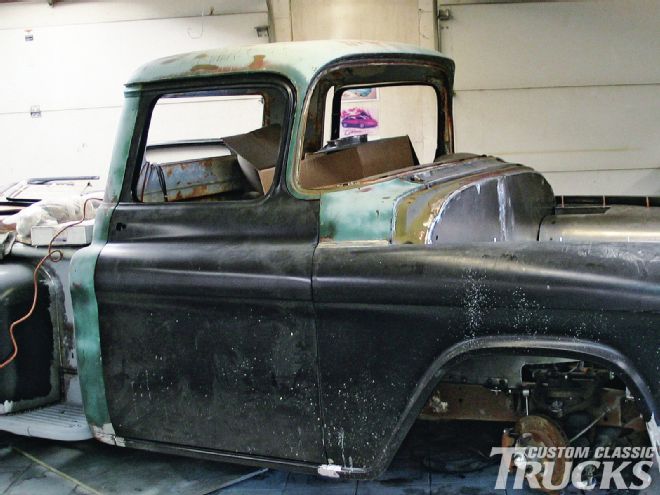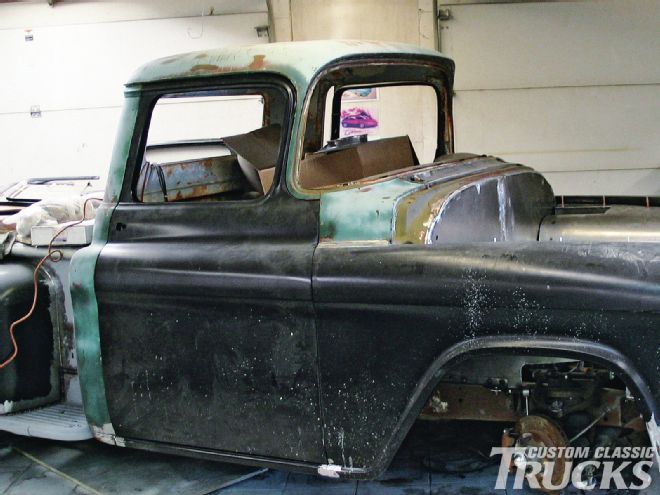
I once read on the back of a pizza box that said, “No task ahead of you is as great as the power within you.” To be honest I was a bit shocked to see it because I wasn’t up to par on the fortune cookie style of the pizza box, yet at the same time I figured I’d rather have a morale boost than a set of lucky numbers. (Confucius hasn’t exactly been channeling the correct powers of the unknown in dealing my hand of lucky numbers distributed along a sliver of paper inside a horseshoe cookie!) For some strange reason, mostly due to a comical conversation piece, I cut the saying out and hung it in the shop. I guess you could call it my version of Notre Dame’s “Play like a champion today.” Now how does all this apply to some vintage tin? Well, I think it’s a motto we all could use when the time comes to customize your ride.

For whatever the reason, a lot of folks out there find tackling metalwork an unattainable task. Sure, most will fill holes, shave a badge or something else along the lines of basic metalwork, but actually digging into a project that will help define your ride . . . let’s just say it’s harder to convince them it’s possible than it is keeping Lindsay Lohan away from an open bar! The only fallacy to the whole scenario is that metal is one of the easiest things to work. It can be cut, shaped, welded and built into almost anything; and last time I checked our old trucks are mostly comprised of it. Good old-fashioned, thick malleable American steel at that, which is the best kind to work with. With that being said, for this tech story I want everyone to adapt the pizza box motto, because in reality this metalworking story is quite possible-as I’m going to show.
One of the greatest ways to enhance a classic truck is to chop the top. Now there a more ways to chop a top on a classic truck than you could shake a stick at, but in the end the processes are all similar: cut the A and B pillars, split the roof, add a piece of filler and then fit the jambs and glass. It’s as basic as that. Funny part is the metalwork isn’t the hardest part; the trickiest part is fitting doors and glass. However, what if I said there was a way to chop your ’55-’59 Chevy truck without ever touching the doorjambs and the only glass to be dealt with is the windshield? Now the excuse bank is running dry! By chopping just the front of the A-pillars and the cap of the roof on these trucks, one can actually end up with a 4-inch chop, without ever touching the doors, side glass, back glass or jambs.
These old Chevy and GMC trucks are so robust up in the cap of the roof that there’s plenty of meat to play with. Because the windshield sits so much higher than the top of the side glass, GM had to accommodate the top by adding more metal to the cap in order to flow the glass into the roof line. Beyond that they also developed the cab with a built-in sunvisor—a total departure from the early advanced design bodies. The new cap of the Chevy roofs didn’t create a flowing line from the windshield to the roof transition. Instead, there is a definitive break in the top. In fact, it wasn’t until ’73 that we see GM bring back—and never depart from again—the much more aerodynamic and visually stunning effect of flowing the windshield into the top. Because of all these attributes, it has left the perfect playground for the customizer. By simply removing a few inches from the front of the A-pillar, slicing a sliver from the cap and then deleting the overhang, the roof of the truck will be drastically altered. What one ends up with is a chopped top without all the headaches of glass and fitment. It’s actually quite genius and very simple to accomplish. But don’t take my word for it; just follow along as you’ll see how Star Kustom Shop shows you, “the proof is in the pudding”! By the way, don’t limit this method to only the ’55-’59 Chevy trucks because it can also be applied to other various makes and models of trucks. CCT